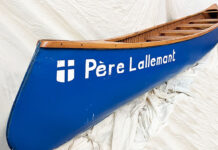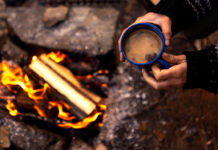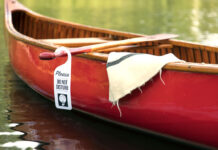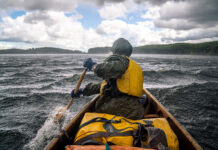Although Wally Schaber is just 65, his legacy looms large enough to be considered in a column dedicated to canoe heritage. A longtime outfitter, outdoor retailer and founder of Black Feather Wilderness Adventures, he’s seen more of North America’s wild country than most of us ever will. His favorite of all places, however, is the valley of the Dumoine River, the subject of his charming new book.
The wild Rivière du Moine (Dumoine) and Deux Joachims portage have been noted for centuries in the journals of great explorers as they made their way across Canada. Today, the Dumoine is the last of 10 major Quebec fur trade routes and tributaries of the Ottawa River to avoid industry and modern colonization.
Full disclosure: Wally and I have been friends for years. Our initial encounter in the 1970s took place on a riverbank not far from the Canoeroots office, and was described by one wet-suited flibbertigibbet as a “chance meeting between two bears from the Moscow Circus.” We took that as a compliment.
On one level, Wally’s debut, The Last of the Wild Rivers, is a well-researched cultural history of the last undammed river flowing south from the high country of West Quebec. Many locals know the Dumoine as a go-to short-excursion whitewater river. Indeed, it was the canoeing potential of the Dumoine that brought Wally into the watershed for the first time in 1969. Having spent time year-round in the area for nearly half a century, the place has written itself into this paddler’s soul. The book is much more than a river biograpy, it’s a river elegy and love story between a man and a very special place.
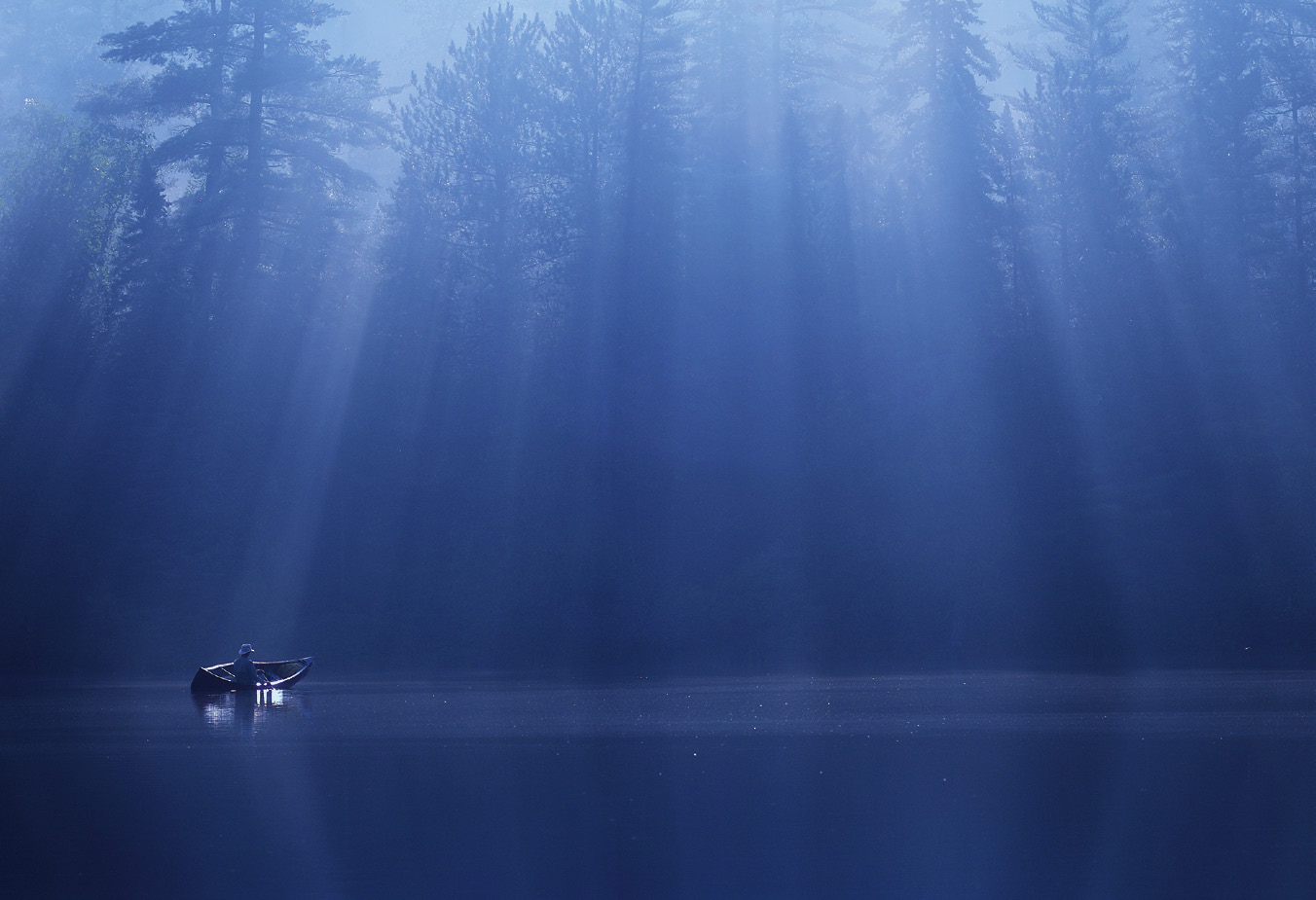
As powerful and personal as his story is, at its core the book is a plea for paddlers and anyone who cares about wildness in any form to recognize the rarity of the Dumoine River and what it represents. This watershed remains in more or less the same state as experienced by the entire march of human history. Set in a continental, or even global framework, the Dumoine holds values and virtues that are all but gone elsewhere—free flowing, clean, unfettered, undeveloped land and water.
Having considered all of the options, and recognizing that instruments for river and watershed protection vary from jurisdiction to jurisdiction, Wally is recommending protection in the form of Du Moine Aquatic Reserve. With threats from every possible source still looming—threats that have compromised just about every other significant watershed in the world—he knows that without substantial public support from all types of valuers of rare and wild places, other interests may well prevail in the Dumoine watershed too.
“The raw wilderness must not change,” he writes. “[To survive, humanity needs] clean water, plentiful wildlife, mature uninterrupted forests, peace and tranquility, and a beautiful, wild, free-flowing river.” Amen.
Like a splash of fresh, cold water, The Last of the Wild Rivers is a call for us to imagine the river, indeed all remaining undammed, undeveloped rivers, and their futures—to imagine them whole—and to take action on their behalf, to take action now.
James Raffan is the former executive director of the Canadian Canoe Museum. Get your copy of The Last of The Wild Rivers at burnstownpublishing.com.
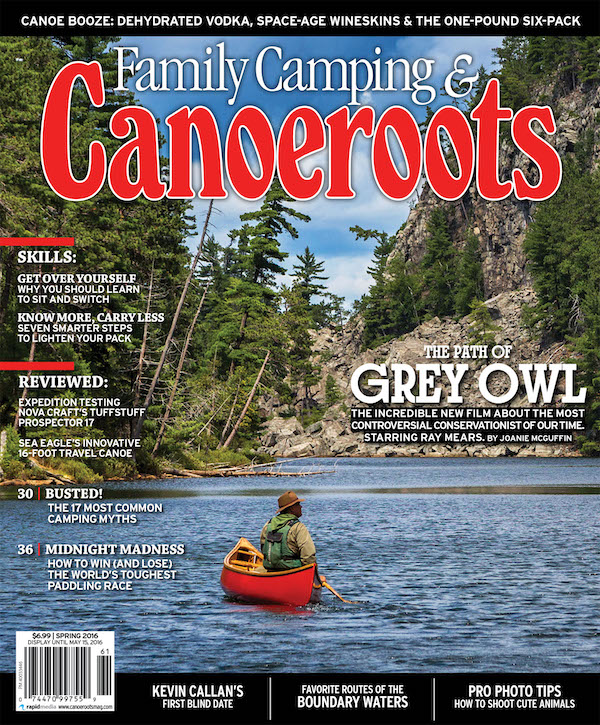 This article originally appeared in Canoeroots Spring 2016 issue.
This article originally appeared in Canoeroots Spring 2016 issue.
Subscribe to Paddling Magazine and get 25 years of digital magazine archives including our legacy titles: Rapid, Adventure Kayak and Canoeroots.




